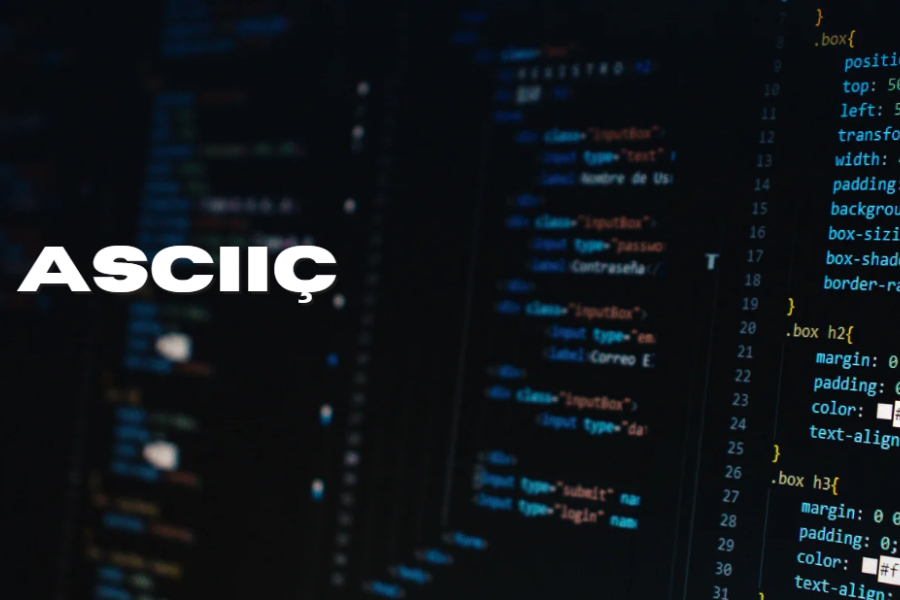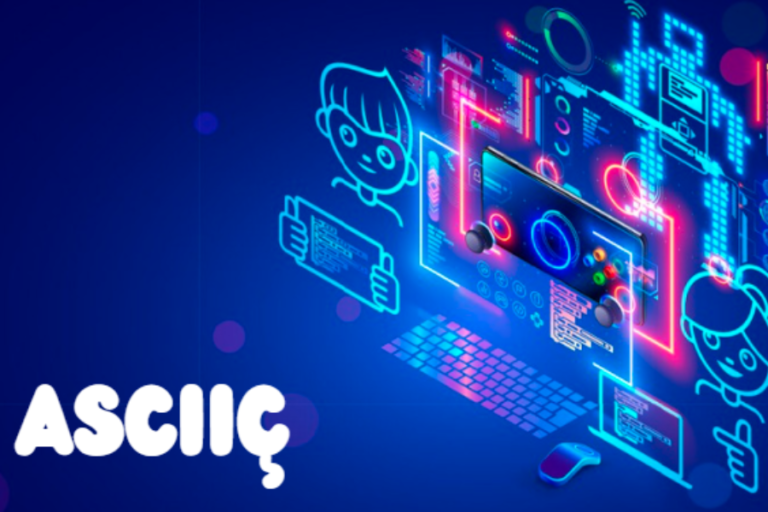Exploring ASCII: The Fascinating World of Character Encoding
Character encoding forms the backbone of digital communication, ensuring that text is accurately interpreted and processed by computers. ASCII (American Standard Code for Information Interchange) is one of the earliest and most widely used character encoding schemes. This blog post delves into the world of ASCII, from its origins and structure to its modern applications and enduring relevance in computing.
What is ASCII?
ASCII stands for American Standard Code for Information Interchange. It is a standard character encoding system that allows text to be represented in electronic devices. ASCII simplifies the encoding of symbolic information, assigning a unique numeric value to each alphanumeric character.
The History of ASCII
Developed in the early 1960s by the American National Standards Institute (ANSI), ASCII aimed to standardize text encoding and unify disparate character sets used at the time. This standardization facilitated compatibility across different systems and laid the groundwork for text representation in computing.
Structure and Design of ASCII
ASCII employs a 7-bit binary code to represent characters, allowing for up to 128 unique values. Each ASCII character is mapped to a specific numeric value, which corresponds to a binary code. This streamlined design made ASCII ideal for early computer systems with limited memory and processing capabilities.
The ASCII Character Set
The ASCII character set includes:
- Control Characters (0-31): Non-printable characters used in early teletypes for functions like line feeds and carriage returns.
- Printable Characters (32-126): Includes letters (both uppercase and lowercase), digits, punctuation marks, and the space character, essential for text processing.
- Delete Character (127): Often used as a backspace function, though it is seldom used in everyday applications.
Applications of ASCII
ASCII is utilized in various contexts:
- Text Files: ASCII encoding is standard for plain text files, ensuring compatibility and ease of porting across different systems.
- Programming: Many programming languages, including C and Python, use ASCII to represent simple characters.
- Internet Protocols: ASCII encodes text-based data transmitted over the internet.
- Data Communication: ASCII ensures that devices in data communication protocols can accurately interpret text characters.
ASCII in Modern Computing
Despite the advent of more advanced encoding schemes like Unicode, ASCII remains relevant due to its simplicity and efficiency. Its compatibility with modern character encoding standards, including Unicode, ensures its continued use in programming, data communication, and text file representation.
Advantages of ASCII
- Simplicity: ASCII is straightforward to implement, reducing hardware costs.
- Interoperability: ASCII is universally supported, allowing for seamless processing across different systems.
- Efficiency: Its compact representation uses minimal memory and processing power.
Limitations of ASCII
- Limited Character Set: ASCII’s 7-bit encoding supports only 128 characters, which is insufficient for languages with larger character sets.
- No Multilingual Support: ASCII primarily supports English, limiting its utility for international communication.
Extended ASCII and Beyond
To address the limitations of 7-bit ASCII, Extended ASCII was developed. This 8-bit encoding system includes 256 characters, accommodating additional symbols and characters from various languages. However, Extended ASCII still falls short compared to Unicode.
Unicode: The Next Generation
Unicode was created to provide a comprehensive character encoding standard that supports characters from most writing systems. With over a million unique character codes and variable-length encoding in UTF-8, Unicode is the modern standard for text representation, building on ASCII’s foundational principles.
ASCII Art: A Creative Legacy
ASCII art involves creating images using characters, symbols, and patterns. This technique, popular in the early days of computing, continues to be appreciated for its creativity and historical significance.
ASCII in Network Protocols
Many network protocols use ASCII for text data representation. HTTP headers, email headers, and URL encoding rely on ASCII to ensure compatibility and readability across different systems.
Most Used ASCII Codes and Their Functions
- 32 (Space): Space character
- 33 (!): Exclamation mark
- 65-90 (A-Z): Uppercase letters
- 97-122 (a-z): Lowercase letters
- 48-57 (0-9): Digits
- 13 (CR): Carriage Return
- 10 (LF): Line Feed
Future of Character Encoding
While Unicode is the dominant character encoding standard today, ASCII’s legacy continues to influence modern computing. As technology evolves, ASCII will remain a fundamental component of text transmission and representation.
Conclusion
ASCII has played a pivotal role in the development of digital communication, providing a simple yet effective means of encoding text. Despite its limitations, ASCII’s impact on computing is enduring, and it continues to be a key element in the evolution of character encoding standards.
FAQs
ASCII vs Unicode – What’s the Difference?
ASCII is a 7-bit character encoding standard with 128 characters, primarily supporting English letters, digits, and control characters. Unicode, on the other hand, is a universal encoding standard that represents over a million characters from various scripts. The first 128 Unicode characters match ASCII, ensuring backward compatibility.
Why is ASCII still used today?
ASCII remains in use due to its simplicity, legacy, and efficiency. Many programming languages, protocols, and systems rely on ASCII for representing text and control characters, especially in environments with limited memory and power.
How do Extended ASCII and Unicode address ASCII’s limitations?
Extended ASCII, an 8-bit encoding system, expands the character set to 256 characters, including additional symbols and language characters. Unicode further extends this by offering a variable-length encoding scheme that supports over a million characters, making it a truly global standard.






